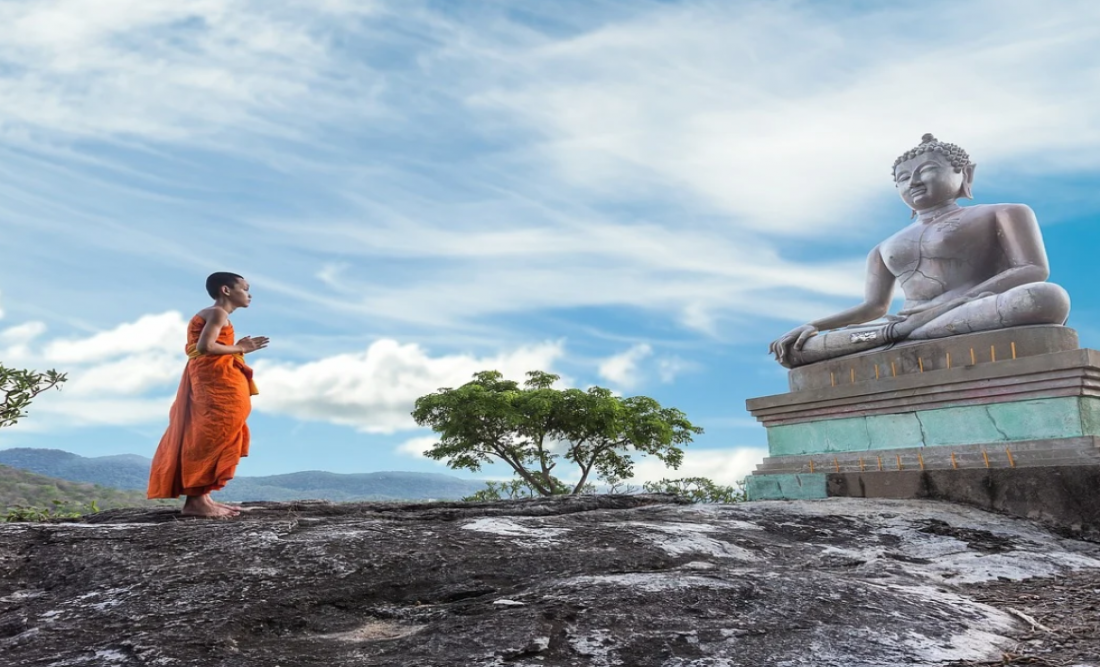Buddhism and Yoga: A way of improving Health

Friends, welcome to another article of Wordictpost, in this post we will learn about Buddhism and Yoga and together we will also know how you can improve your health in the way of Buddha.
Yoga is the oldest form of practice in India. This is India's invaluable gift to the world. The birth and development of Buddhism also took place in India. The practice of cultivation is mainly described in Buddhism. In yoga too, spiritual practice is the key to attaining salvation. Both yoga and Buddhism consider the end of the cycle of birth and death. Therefore, there is a similarity in both the principles of Yoga and Buddhism. In both Yoga and Buddhism, it has been emphasized that for mental training it is necessary to adapt to the physical and health conditions. By this action, one has to subdue the body and prepare it for the attainment of knowledge.
Like Ashtanga Yoga of Yoga, Buddhist practice also describes the Ashtanga path to nirvana, which also includes Yama and Niyam. The eightfold path of Buddhist practice is samma-vittha (samyak visha) i.e. knowledge of Arya-truth. Samma-sankalp (Samyak sankalpa) means determination to abandon raga, malice, violence and worldly matters. Samma-covenant (Samyak Vak) means the abandonment of false, improper and misconduct and protecting the true word. Samma-Kampant (Samyak Karmant) means abduction of His Holiness, abandoning the desire for lust-fulfillment and doing good deeds. Samma-Aajeev (Samyak Aajeeva) means a just livelihood. Samma-vayam (perfect exercise) means to destroy evil and be determined to do good deeds. Samma-sati (Samyak Smriti) means Chittashuddhi by stopping greed etc. Samma-samadhi (samyak samadhi) concentration of mind.
It is necessary to follow these eight organs. By following them, there is purification of conscience and knowledge arises. After Yama and Niyam, there is a description of asana in yoga, which is the name of a position of the body steadily. In Buddhist practice, the seeker uses some asana for meditation. The idol of Lord Buddha himself is found in Padmasana. As far as Pranayama is concerned, the Buddha also preached Pranayama in the form of ‘Aanapan Sati’.
The quietness of yoga and the feelings of imperfection, imperfection and sorrow are similar to Buddhist vipassana. Meditation is a major process in both. In yoga it is impossible to achieve the goal without meditation. According to the Buddha, meditation in solitude is the only means of attaining spiritual peace and detachment. Apart from this, samadhi is also discussed in Buddhism. According to Buddhism, one attains enlightenment when the mind converges from samadhi. It is also said in yoga that yogis benefit from supernatural knowledge by being perfect in samadhi.
In yoga, vyādhi, sthāya, skepticism, pramad, unobtrusiveness, and non-stagnant are considered to be deflections of the mind, and sorrow, dormancy, angmajeitya, breathing and quivering, arise with this aberration. These occur only in the deranged mind, not in the contained mind. They are also for those walking the Buddhist path. The only difference is that in the Buddhist path, avoid them by looking at them as either the five preoccupations such as kamachanda, vyapada, sthanamriddha, udhtya, kaukrita and vivitika, chītāvratā, counseling, kāmārāga, rupa-raga ar arpa-raga, mana, avidāta and avidya. Have to try There is also a book called Buddhist Society of Buddhists. It describes the practices and purposes practiced by Buddhists here. The plot describes yoga-pratyahara, meditation, perception, pranayama, anusmriti and samadhi. Yoga is often considered to be a hindrance for the seeker in achieving the ultimate goal of personalities. Buddha also forbade his disciples from performing miracles. Buddha himself was a high-grade yogi.
Thanks for reading this article.











